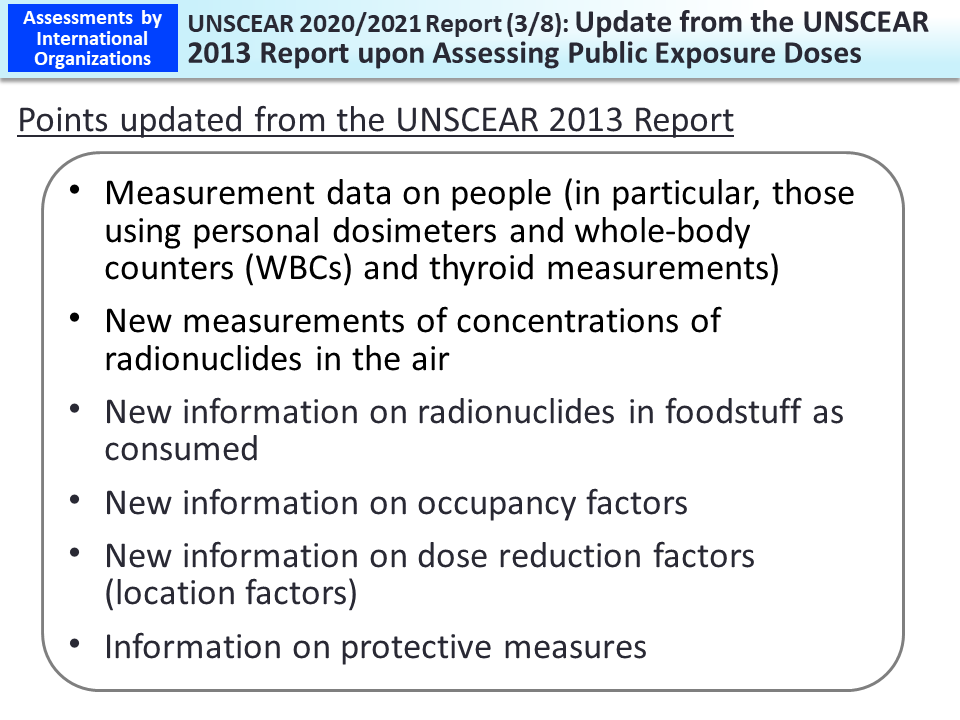UNSCEAR 2020/2021 Report (3/8): Update from the UNSCEAR 2013 Report upon Assessing Public Exposure Doses
It became possible to estimate doses based on enhanced measurement-based information by the use of the latest knowledge up to the end of 2019 that became available, following the publication of the UNSCEAR 2013 Report.
Numerous measurement campaigns have been carried out to assess individual doses from external exposure through surveys of daily activity patterns of residents, measurements of ambient dose rates and individual measurements using personal dosimeters. The UNSCEAR has made use of some of these data and other scientific results published in peer-reviewed journals to validate its estimates of doses from external exposure and in the development of a revised model to apply to the wider population. Furthermore, the UNSCEAR has validated its estimates of thyroid doses from internal exposure based on the results of the thyroid measurements covering more than 1,500 persons in total that were conducted in 2011.1 Whole-body monitoring campaigns have also been carried out by national institutes, such as the Japan Atomic Energy Agency (JAEA) and the National Institute of Radiological Sciences (NIRS), and by universities, hospitals and municipalities, and the measured levels of radioactive cesium in the body were used to estimate doses from its intake by inhalation and ingestion.
Regarding environment monitoring data, part of the results of the monitoring conducted in Japan from March 2011 to March 2018 (data on dose rate in air, radionuclide ground deposition density, and radionuclide concentrations in air and in food and drinking water) was used to estimate doses. For example, measurement data regarding radionuclide concentrations in air while radionuclides were being discharged from Tokyo Electric Power Company (TEPCO)’s Fukushima Daiichi NPS were limited for the initial stage of the accident and for the areas damaged by the tsunami, in particular, but data on radionuclide concentrations in suspended particles in air at seven locations in Japan from March to May 2011, which had not been available, were newly made available.
Regarding food and drinking water, in addition to their monitoring data, information on measurements of the radioactive cesium content in the whole daily diet sampled by the duplicate-diet or market-basket methods was updated.
- The data for around 1,300 persons that are reported in papers etc., while omitting such data as those under conditions with high background levels, were analyzed.
[Relevant parts in the Report]
- UNSCEAR 2020/2021 Report (prepared based on paragraphs A11 and A13, A16, A17, A19, A20, A23, A29, and A31 on pages 112 to 122, ANNEX B)
- Included in this reference material on March 31, 2023
- Updated on March 31, 2024

